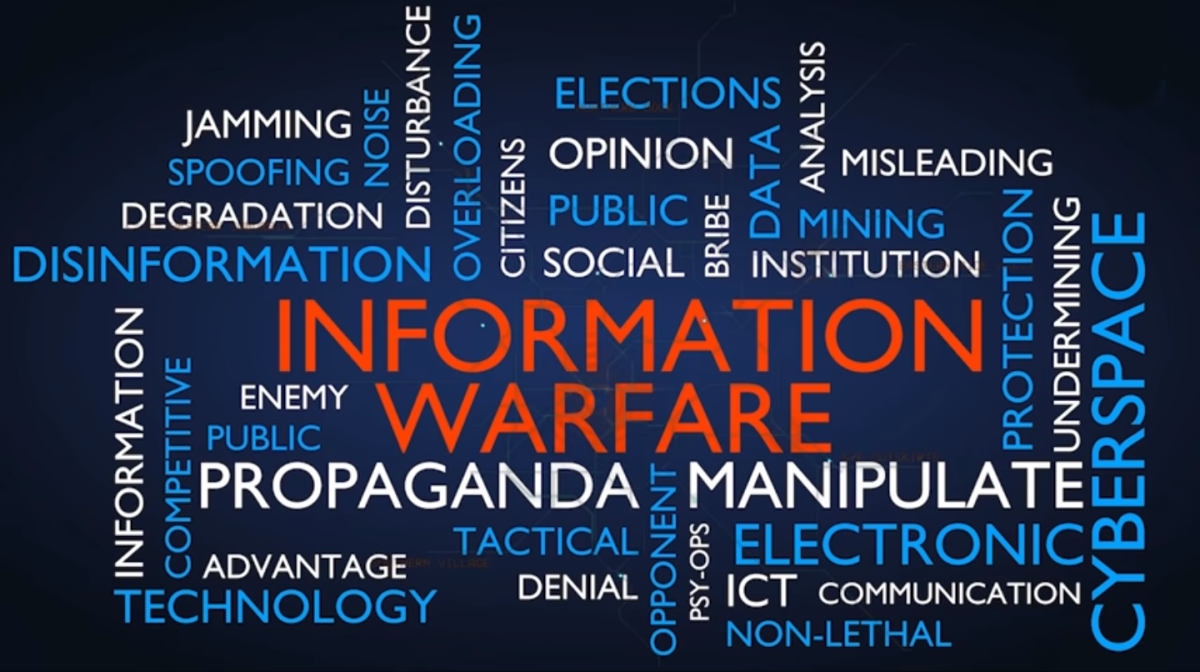Pegasus Spyware

- 31 Dec 2024
In News:
For the first time, a court in the US has held Israel’s NSO Group liable for its intrusive spyware Pegasus, which could set up a measure of accountability for the company that it has, for long, allegedly downplayed.
Overview:
- Pegasus is a spyware developed by the Israeli company NSO Group.
- It has been used for surveillance, allegedly targeting journalists, activists, politicians, and government officials across the world, including India.
Recent Legal Developments:
- US Court Ruling (2024):
- A US court held NSO Group liable for using Pegasus to surveil 1,400 WhatsApp users, including 300 from India.
- NSO Group violated the Computer Fraud and Abuse Act (CFAA) and the California Computer Data Access and Fraud Act (CDAFA).
- The ruling may revive debates on the accountability of spyware use and its implications on privacy.
Use of Pegasus in India:
- Targeted Individuals (2021):
- 300 Indian numbers allegedly targeted, including journalists, politicians, Union Ministers, and civil society members.
- High-profile targets included opposition leaders, constitutional authorities, and activists.
- Government Denial:
- The Indian government denied involvement, stating allegations lacked substance.
- In Parliament, IT Minister Ashwini Vaishnaw rejected claims, asserting India’s surveillance laws prevent unauthorized surveillance.
- NSO Group Response:
- NSO Group denied the allegations, calling them “false and misleading” and citing doubts about the sources.
Investigations and Legal Actions:
- Supreme Court Inquiry:
- The Supreme Court appointed a committee of technical experts in 2021 to investigate claims.
- August 2022 Report: Found no conclusive evidence of spyware use on examined devices but noted lack of cooperation from the government.
- State-Level Investigations:
- West Bengal: Set up a Commission of Inquiry into Pegasus surveillance, later halted by the Supreme Court.
- Andhra Pradesh: The issue became political, with allegations that the previous government used Pegasus to monitor opposition figures.
Pegasus Spyware Features:
- Capability: Can hack iOS and Android devices to collect data, record conversations, capture photos, and access app data.
- Exploitation Method: Uses zero-day vulnerabilities to exploit iOS and Android devices covertly.
- Invisibility: Operates without user knowledge, often only detected through signs like browser closings after phishing links are clicked.
Controversial Use of Pegasus:
- Global Use: Though intended for fighting terrorism and crime, Pegasus has been misused for spying on journalists, politicians, human rights activists, and opposition leaders.
- India Specifics:
- Pegasus Project: Targeted Indian citizens, including activists, journalists, and politicians.
- Amnesty International: Confirmed use of Pegasus to target Indian phones.
India's Legal Framework for Surveillance:
- Telecommunications Act (2023): Empowers the government to control telecom services during emergencies, but requires authorization for lawful interceptions.
- IT Act (2000): Allows the government to monitor, intercept, or decrypt information through computer resources under certain conditions.
- Digital Personal Data Protection (DPDP) Act (2023): Aims to protect personal data, including provisions on surveillance, data breaches, and rights of individuals over their data.
Privacy and Surveillance Concerns:
- Impact on Fundamental Rights:
- Surveillance infringes on the right to privacy under Article 21 of the Constitution.
- Freedom of speech and expression (Article 19) may be curtailed, with surveillance being used to suppress dissent.
- Lack of Transparency:
- Surveillance often occurs without judicial or parliamentary oversight, leading to potential executive overreach.
- Inability to Seek Legal Remedies:
- Citizens targeted by surveillance cannot challenge it due to lack of awareness, undermining constitutional rights.
- Executive Overreach and Suppression of Free Expression:
- Pegasus revelations have raised concerns about surveillance targeting constitutional functionaries, suppressing free speech, and stifling open discourse.
Armed Forces (Special Powers) Act (AFSPA)

- 01 Oct 2024
In News:
- The Manipur government has extended the Armed Forces (Special Powers) Act (AFSPA) in the hill districts of the State for another six months.
- Effective October 1, the provisions of the Act will be extended to the whole State, except 19 police station limits in seven valley districts, thus maintaining the status quo, since three such notifications were passed since March 2023.
- It added that the “disturbed area” status could not be reviewed and a detailed ground assessment could not be done as “the sister security agencies are preoccupied with maintenance of law and order” and “it will be premature to arrive at any conclusion or decision on such sensitive matter without detailed assessment.”
Overview of the Armed Forces (Special Powers) Act (AFSPA)
- Enactment: The AFSPA was passed by Parliament and approved by the President on September 11, 1958.
- Context: It was introduced in response to rising violence in the North-eastern States, which state governments struggled to control.
Key Provisions of AFSPA
- Powers Granted:
- The Act empowers armed forces and Central Armed Police Forces in "disturbed areas" to:
- Kill anyone acting against the law.
- Arrest and search premises without a warrant.
- Receive protection from prosecution and legal action without Central government sanction.
- The Act empowers armed forces and Central Armed Police Forces in "disturbed areas" to:
- Issuance of Notifications:
- Both State and Union governments can issue notifications regarding AFSPA.
- The Ministry of Home Affairs issues "disturbed area" notifications for Arunachal Pradesh and Nagaland.
Definition of Disturbed Areas
- Criteria:
- A disturbed area is declared under Section 3 of AFSPA, indicating the need for armed forces' assistance in maintaining civil order.
- Factors leading to the declaration can include:
- Conflicts among different religious, racial, linguistic, or regional groups.
- Authority to Declare:
- The Central Government, the Governor of the State, or the administrator of a Union Territory can declare an area as disturbed.
- Duration:
- Once designated as disturbed, the area remains classified as such for three months, as per The Disturbed Areas (Special Courts) Act, 1976.
- State Government Input:
- State governments can recommend whether AFSPA should continue in their region.
Grey-zone Warfare Latest Entry in Lexicon of Warfare

- 04 Mar 2024
Why is it in the News?
On the last day of the 2024 Raisina Dialogue (February 24), India’s Chief of Defence Staff General Anil Chauhan said that “grey zone warfare” is the latest in informal warfare.
What is the Grey Zone Warfare?
- Grey zone warfare refers to a strategic approach where a nation seeks to gain advantages over others without engaging in overt conflict.
- It involves a series of tactics, including cyberattacks, disinformation campaigns, and economic pressures, aimed at subtly undermining or destabilizing adversaries.
- China has notably employed this strategy against India and neighboring countries.
What are the China's Grey Zone Tactics Against India?
- South China Sea Activities: China asserts its dominance in the South China Sea using naval and civilian vessels, raising tensions with neighboring countries like India.
- Infrastructure Near Borders: China constructs infrastructure and settlements near India's borders, bolstering territorial claims and strategic positioning.
- Digital Investments: China invests in Indian digital platforms and media, influencing public narratives and perceptions.
India's Counter-Measures:
- Inter-Agency Collaboration: India promotes collaboration among defense, intelligence, and law enforcement agencies to devise comprehensive strategies to counter grey zone threats.
- Enhanced Vigilance: India increases surveillance and presence in border areas and strategic locations to detect and respond to covert Chinese activities.
- Regulating Foreign Investments: India scrutinizes foreign investments in critical sectors, particularly technology, to safeguard national security interests.
Long-Term Implications for India:
- Information Warfare: Grey zone conflicts often involve digital misinformation, influencing public opinion and perceptions.
- Economic Leverage: Dependency on foreign investments poses vulnerabilities if used as leverage by investing nations.
- Technology Dependency: Heavy reliance on foreign technology exposes India to risks, emphasizing the need to bolster indigenous technological capabilities.
Conclusion
Grey zone warfare encompasses a multifaceted strategic landscape, blending digital, economic, and geopolitical tactics. India recognizes these challenges and is actively devising strategies to navigate this complex terrain.
Bengaluru's Rameshwaram cafe blast puts the spotlight on IEDs

- 02 Mar 2024
Why is it in the News?
At least nine people were injured after an explosion at the bustling Rameshwaram Cafe in Bengaluru’s Whitefield area recently, possibly by an improvised explosive device (IED).
What is Improvised Explosive Devices (IEDs)?
- An Improvised Explosive Device (IED) refers to a makeshift explosive device constructed and deployed unorthodoxly or improvised.
- These devices are typically crafted using commonly available materials, including explosives, triggers, and containers, often to cause destruction, injury, or death.
- IEDs can vary widely in design and complexity, ranging from simple pipe bombs to more intricate devices incorporating timers, remote controls, or even cellular communication for activation.
- IEDs can be deployed using a vehicle, carried, placed, or thrown by a person, delivered in a package, or concealed on the roadside.
- Due to their adaptable nature, IEDs are commonly used by insurgents, terrorists, and other malicious actors to carry out attacks against both military and civilian targets.
- Their unpredictable nature and often concealed placement make them particularly challenging for security forces to detect and mitigate.
- Efforts to counter IED threats involve a combination of technological advancements, intelligence gathering, and counterinsurgency strategies aimed at identifying and neutralizing these devices before they can cause harm.
Types of IEDs:
- Vehicle-Borne IEDs: Among the most destructive forms of IEDs are those concealed within vehicles. These can be driven to specific locations and detonated, causing massive explosions capable of levelling buildings.
- Suicide Bombings: Suicide bombings involve individuals strapping IEDs to their bodies, becoming human carriers of destruction. This method inflicts maximum damage in densely populated areas.
- Package IEDs: Package IEDs are small devices hidden in innocuous-looking packages. They are often placed in public spaces, targeting unsuspecting victims.
Methods of IED Initiation:
- Remote Control: IEDs can be remotely triggered using various methods, such as cell phones or radio signals, allowing attackers to maintain a safe distance from the explosion.
- Pressure Activation: Pressure-sensitive IEDs detonate when a certain amount of pressure is applied, making them lethal traps for those who inadvertently trigger them.
- Timers: IEDs can also be equipped with timers, which delay the explosion to occur at a specific time, further complicating detection and prevention.
The Devastating Impact of IEDs:
- The aftermath of IED explosions is often catastrophic, leading to loss of life, severe injuries, and widespread damage to infrastructure.
- The psychological impact on survivors and affected communities can be long-lasting.
Detection Technologies and Challenges:
- Detection technologies such as (Metal Detectors, X-ray and Imaging Scanners, Explosive Trace Detection (ETD), and Sniffer Dogs) play a critical role in countering the threat of Improvised Explosive Devices (IEDs), but they also face numerous challenges due to the evolving nature of these devices.
Cabinet approves Flood Management and Border Areas Programme (FMBAP) for the period 2021-26

- 22 Feb 2024
Why is it in the News?
Recently, the Union Cabinet approved the continuation of “Flood Management and Border Areas Programme (FMBAP)” with a total outlay of Rs. 4,100 crore for a period of 5 years from 2021-22 to 2025-26.
About the Flood Management and Border Areas Programme (FMBAP):
- The FMBAP Scheme is being implemented throughout the country for effective flood management, erosion control and anti-sea erosion and to help in maintaining peace along the border.
- The scheme benefits towns, villages, industrial establishments, communication links, agricultural fields, infrastructure etc. from floods and erosion in the country.
- The catchment area treatment works will help in the reduction of sediment load into rivers.
- The Scheme aims at the completion of the ongoing projects already approved under FMP.
The Scheme has two components:
- Under the Flood Management Programme (FMP) component of FMBAP with an outlay of Rs. 2940 crore, central assistance will be provided to State Governments for taking up critical works related to flood control, anti-erosion, drainage development and anti-sea erosion, etc.
- The pattern of funding to be followed is 90% (Centre): 10% (State) for Special Category States (8 North-Eastern States and Hilly States of Himachal Pradesh, Uttarakhand and UT of Jammu & Kashmir) and 60% (Centre):40% (State) for General/ Non-Special Category States.
- Under the River Management and Border Areas (RMBA) component of FMBAP with an outlay of Rs. 1160 crore, flood control and anti-erosion work on common border rivers with neighbouring countries including hydrological observations and flood forecasting, and investigation & pre-construction activities of joint water resources projects (with neighbouring countries) on common border rivers will be taken up with 100% central assistance.
- The Scheme has the provision of incentivizing the States which implement flood plain zoning, recognized as an effective non-structural measure for flood management.
Importance:
- While the primary duty of flood management lies with the State Governments, the Union Government actively promotes and advocates for the adoption of modern technology and innovative approaches.
- Additionally, projects executed under the RMBA component serve to safeguard critical installations of security agencies and border outposts situated along border rivers from the perils of floods and erosion.
- Furthermore, the scheme includes provisions for incentivizing states that implement flood plain zoning, a recognized and effective non-structural measure for flood management.
